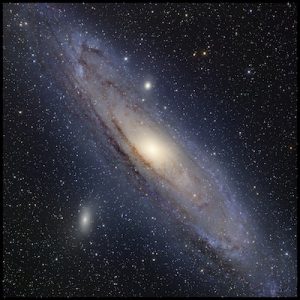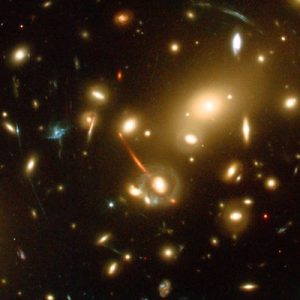The UMKC Galaxy Evolution Group in the Department of Physics and Astronomy conducts observational extragalactic astronomy research that focuses on the formation and evolution of structure on the largest scales. Galaxies are huge collections of normal matter (stars, gas and dust) and dark matter held together by gravity. There are over 100 billion galaxies in the Universe, ranging in size from small dwarf galaxies like the Magellanic clouds that are visible in the Southern hemisphere, to larger, more typical spiral galaxies like our own Milky Way, and on up to the most massive elliptical galaxies that tend to form in clusters of galaxies, which are the largest structures in the Universe.


We study galaxy formation and evolution on all of these scales in the context of the standard model of cosmology, in which galaxies and clusters form at the centers of high-density peaks in the underlying dark matter distribution making up the large-scale structure of the Universe. This model predicts that large, present-day galaxies were built primarily from major and minor mergers that occurred over the last 10 billion years. We empirically test these predictions using the largest astronomical data sets in existence and refine the model as our understanding grows.
The standard model of cosmology also predicts the rate of the growth of structure on the largest scales. We carry out multi-wavelength surveys for galaxy clusters in order to (1) study how massive galaxies grow in the richest environments, and (2) constrain the cosmological parameters that describe the dynamics of the Universe itself. This includes studying the dark energy that is causing the expansion of the Universe to accelerate.


Our students analyze multi-wavelength data from large surveys as well as using targeted observations obtained from a host of ground-based and space-based instruments to gain new insights into the complex physics governing the growth of cosmic structures on all scales.

